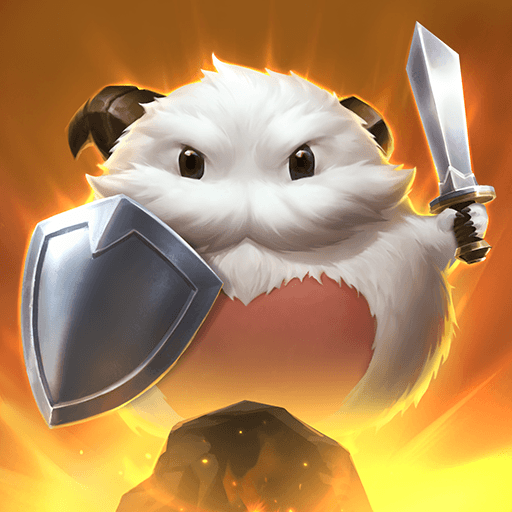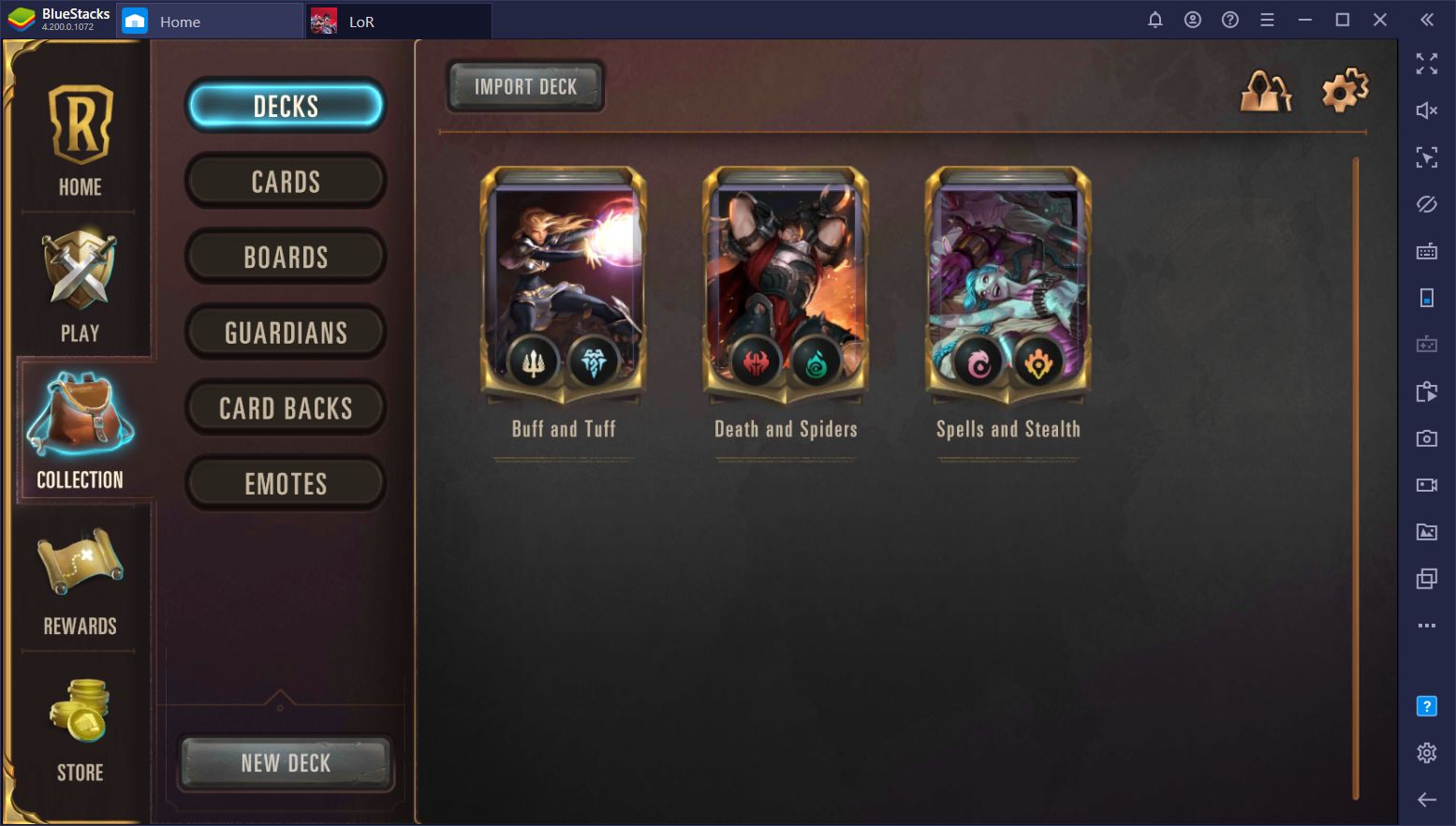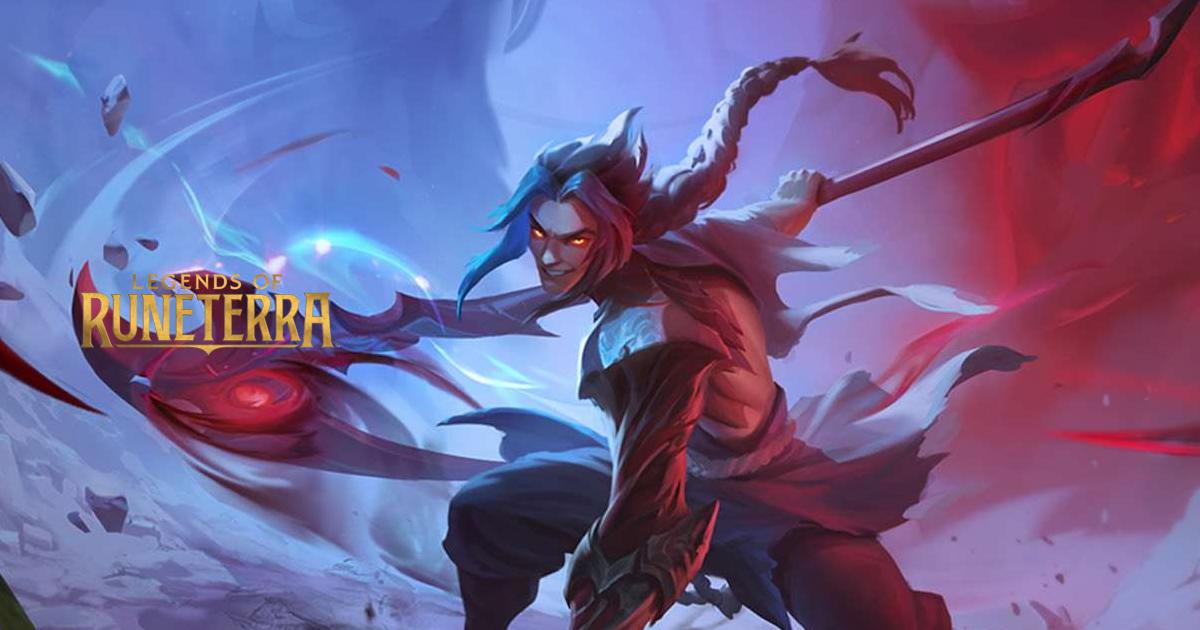Riot Games’ Legends of Runeterra: How to Get Started?
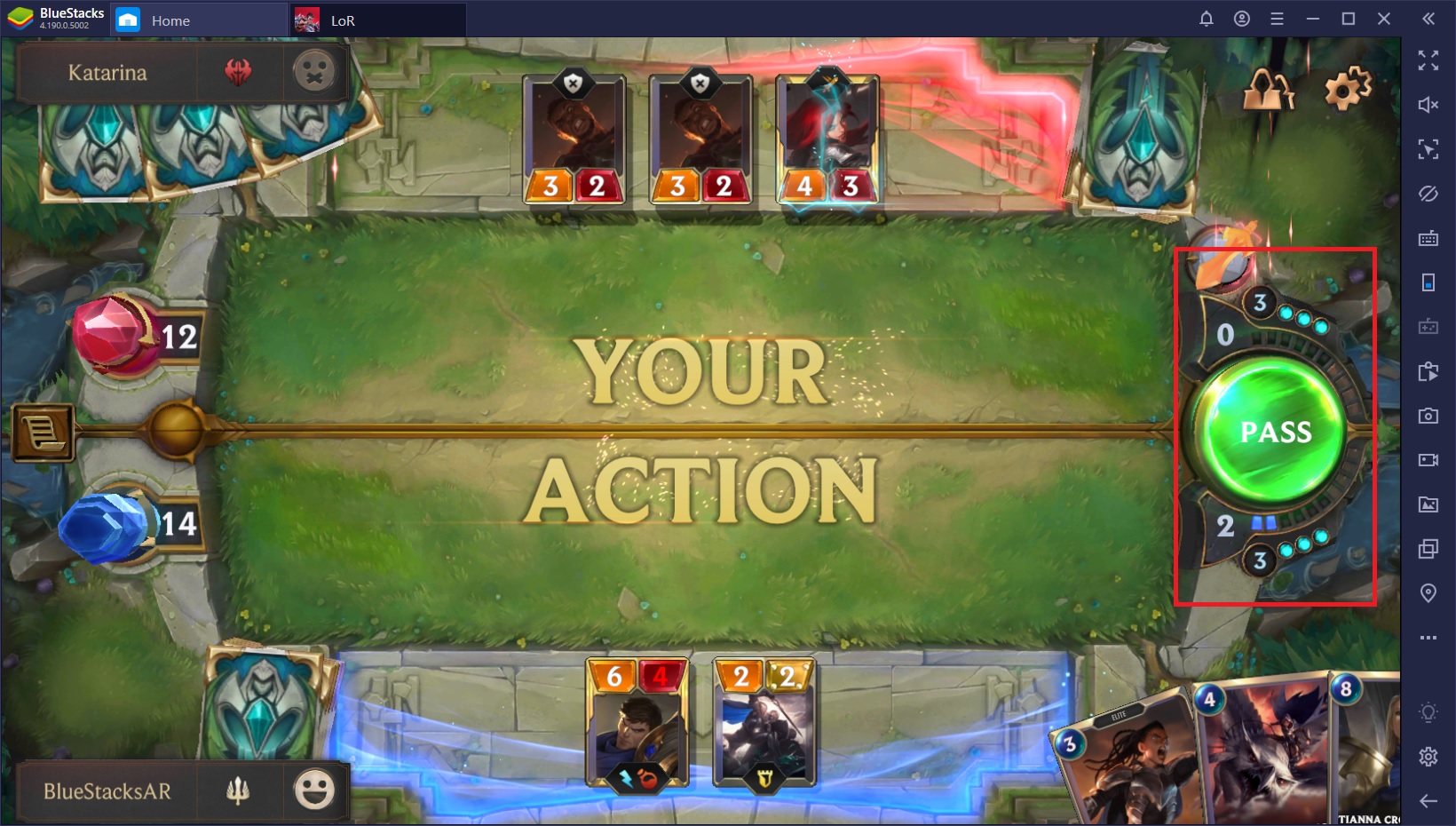
Riot Games, the folks behind the hit MOBA title League of Legends, has been working on a large variety of games in different genres as of late. Now, we don’t really know why they’re making such as grand departure from the title that originally put them on the map, but we’re not complaining, either. For us, the more the merrier; and if we can receive the quality that we’ve gotten from LoL, in all their other games, then we’re definitely in for a treat.
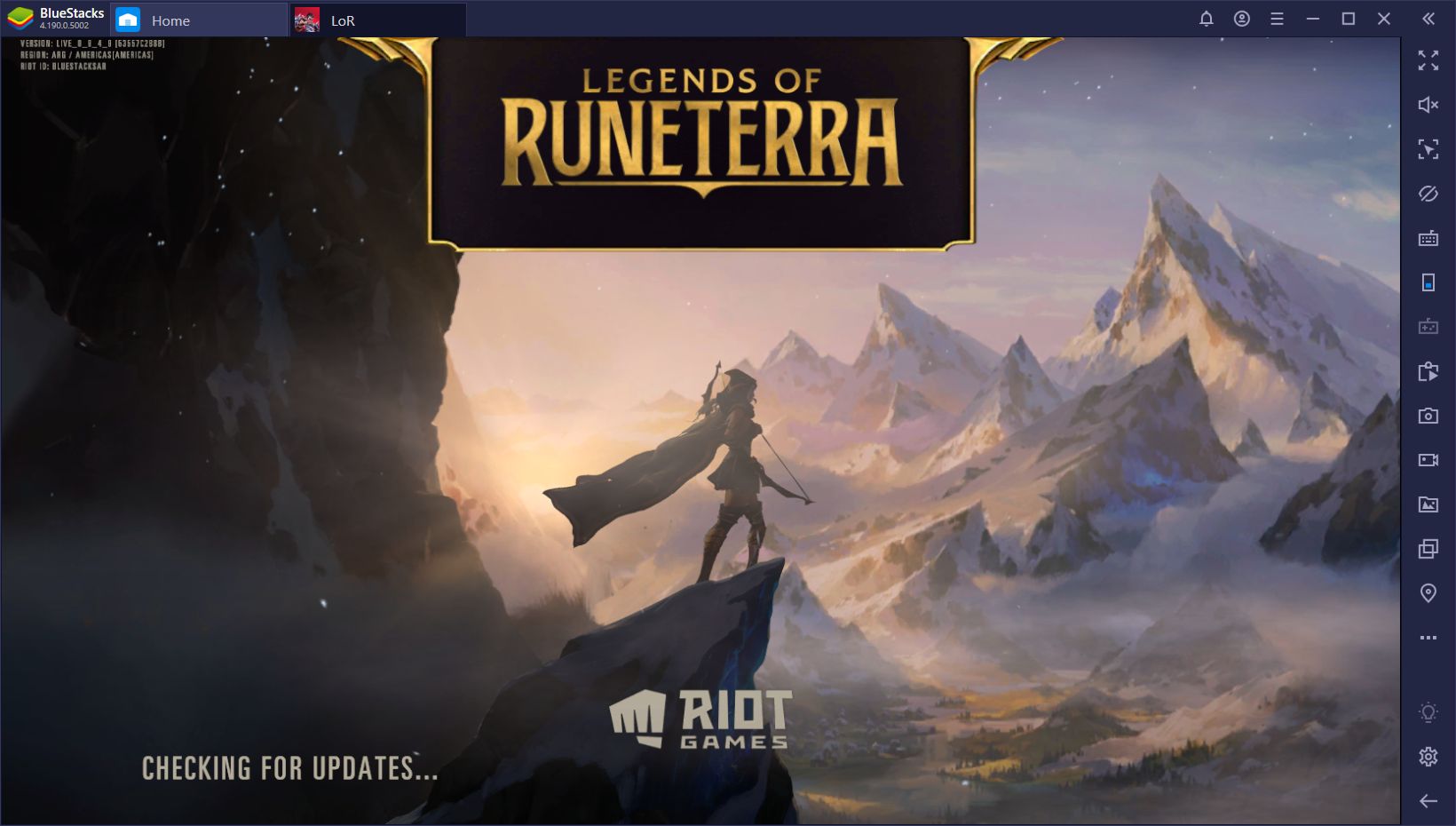
Aside from the original League of Legends, Riot has always been fast to take on new and exciting genres in the form of minigames within that same title. In the past, we’ve been treated to different game modes within LoL, including the ill-fated Dominion, the popular ARAM, the hectic URF and, in recent times, Teamfight Tactics, with the latter being Riot’s take on the auto-battler genre—which we’ve written about not too long ago! However, the devs have started to branch out and are working on standalone titles, the first of which is Legends of Runeterra, a trading card game based on the characters and elements in League of Legends.
Like Blizzard’s Hearthstone taking elements from the Warcraft universe, Legends of Runeterra is based on the lore and characters in League of Legends which, to many a gamer’s surprise, is actually quite deep and expansive. However, while many card games that have come after Hearthstone have attempted to copy the success of the original, Runeterra goes in the opposite direction and actually adds its own unique spin on the classic TCG formula, making it feel like a completely different experience, despite the core concept being similar. We’ve talked about this in detail in the preview we wrote a while ago; feel free to read it if you want to learn more about the premise.
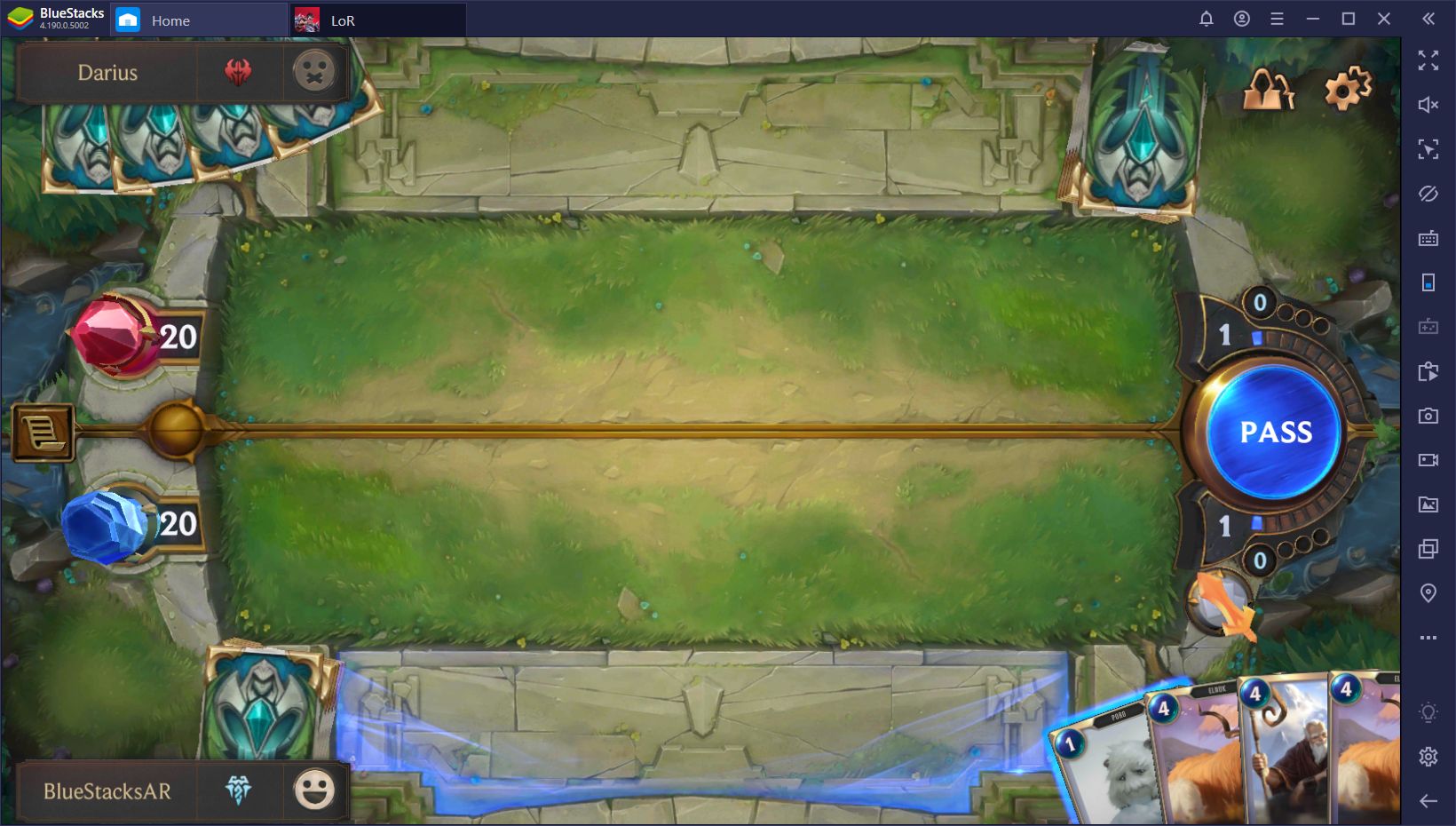
Now that Legends of Runeterra has launched, however, we can go ahead and write about the game itself. We’re going to talk about how to get started in this card game, as well as about how turns flow in every match.
Your Deck
Before you’re able to play, you’ll first need a few cards. Luckily, as soon as you finish the tutorial, you’ll get three different decks, each with a unique playstyle. By the way, you should definitely pay attention to the tutorial as Legends of Runeterra is quite a bit different than other trading card games. As you continue playing and winning matches, you will also acquire boosters with cards that you can use to further customize these decks, or create completely new ones from scratch. We covered the best champion cards for LoR in a previous article.
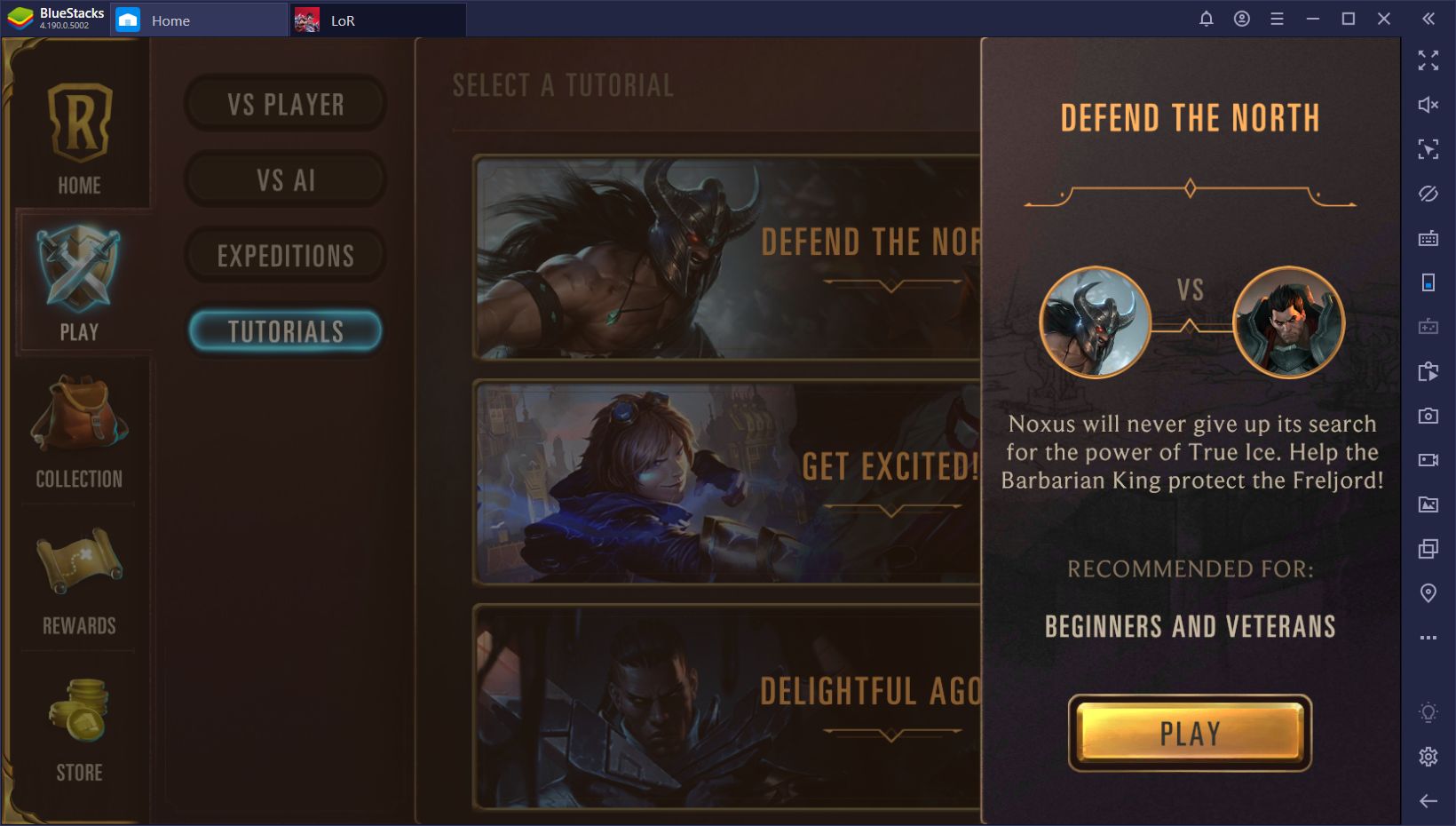
Your deck is comprised of hero, unit, and spell cards from up to two different regions. There are seven different regions in the game, including:
- Demacia: Lots of low-cost units and buffs to increase their power.
- Freljord: Favors gaining and spending mana, and emphasizes using few yet strong units.
- Ionia: Focuses on evasion and mechanics that allow units to penetrate the enemy’s armor, despite not having strong units themselves.
- Noxus: Favors aggressiveness and ending matches early with their brutality and raw power.
- Piltover & Zaun: Specializes in using spell cards for both offensive and defensive applications.
- Shadow Isles: This region favors sacrificing units to achieve different effects, and has plenty of lifesteal to sustain their combatants.
- Bilgewater: Lots of control cards and discard mechanics, combined with powerful units.
Play Legends of Runeterra on PC
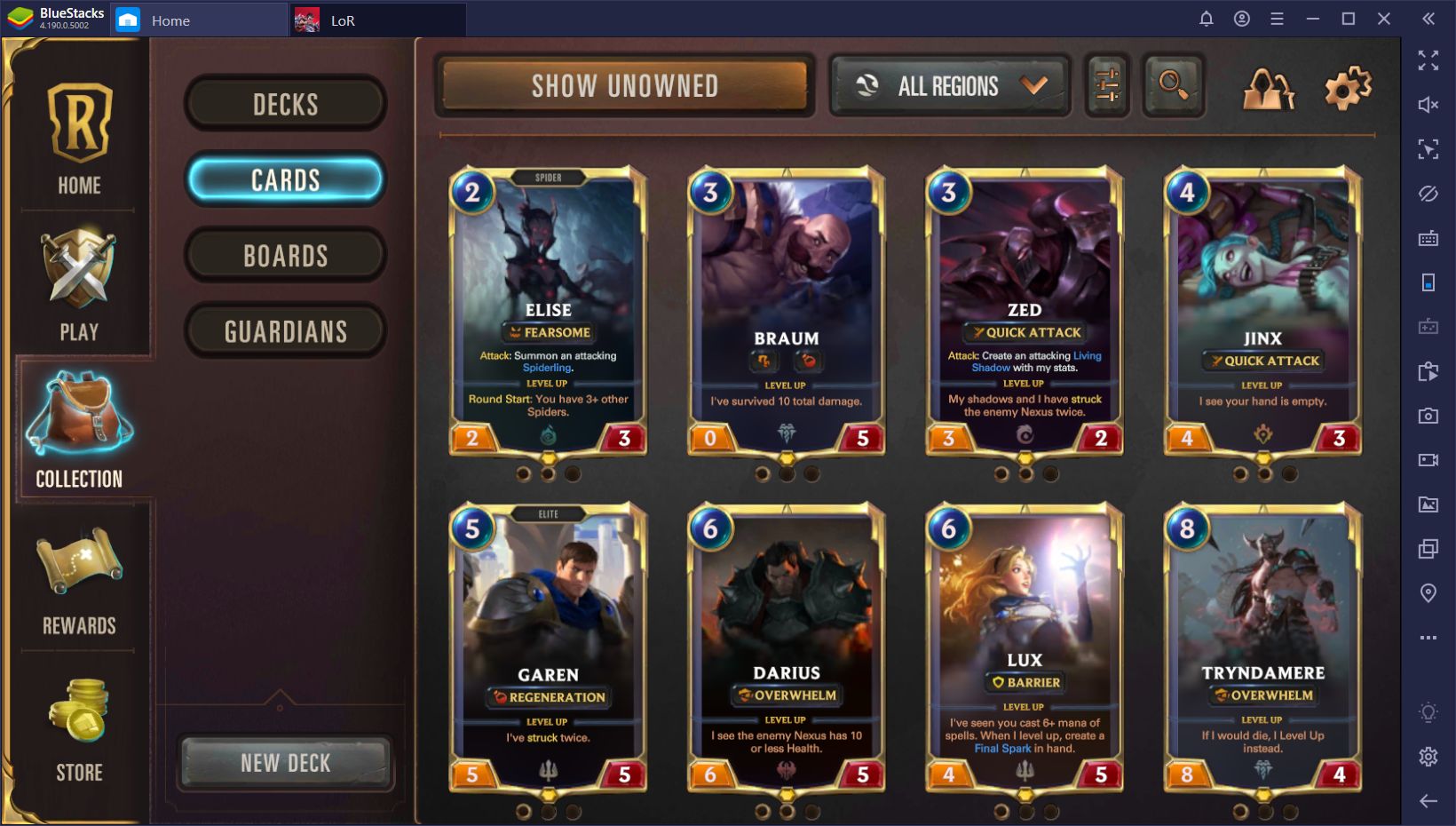

Your combination of regions will, for the most part, determine the play style of the corresponding deck.
The Combat Phases
This is where Legends of Runeterra differs the most from all other card games as turns flow quite differently in this instance. Let’s take a look at how a typical turn goes down in this game:
1. Draw Phase
Both players draw a card and gain an additional mana point.
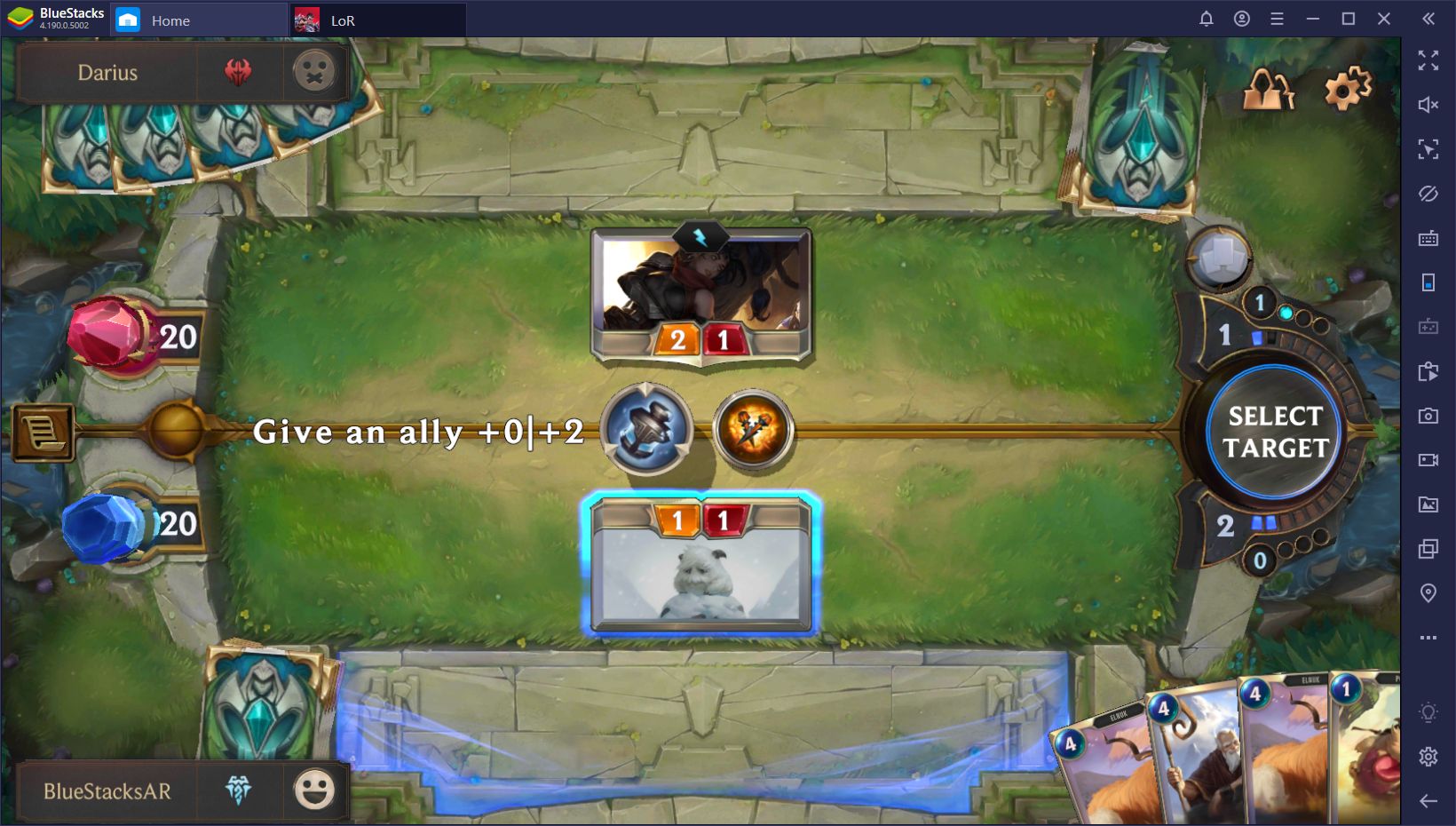
2. Spell Phase
The attacker can summon units or use spells by consuming mana. It the attacker uses a spell card, and it’s not a Burst spell card, the defender can react with his own spell or unit. If it was a Burst spell card, the attacker can continue taking action if he still has mana left.
3. Combat Phase
After the first set of spells have resolved, the attacker can commit his attackers on the field. Once committed, this formation cannot be changed until the attack resolves. Before the attack happens, however, the defender can commit his own defenders and has the liberty of choosing the specific units for blocking the attackers. The defender can also use spell cards before committing the block.
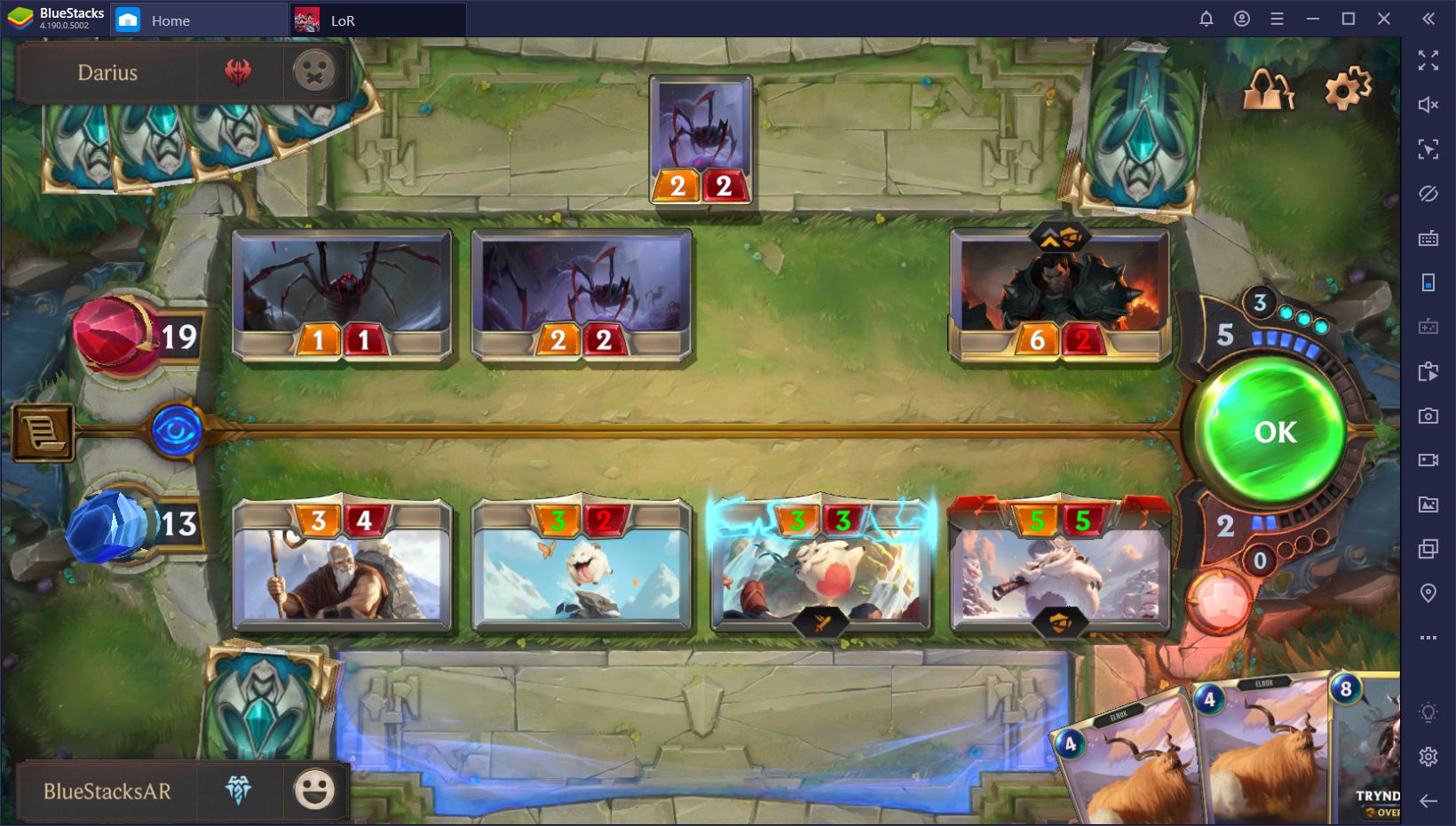
4. Review Phase
After the attack has concluded, both players can choose to either spend their remaining mana by summoning units or using spells or to pass their turn. Any excess mana not used by the end of the turn will go into the reserve mana pool, where up to 3 points can be stored at any given moment. This mana is consumed exclusively for powering spells exclusively and can’t be used for summoning units.

As you can tell, the rounds in Legends of Runeterra are a bit different from other card games like Hearthstone, and while it’ll take a bit to get used to it, you’ll need to do it if you want to win your matches, or at least if you want to understand exactly what’s going on. Between the variety of unique cards and the nuances that make this game different from the rest, you’ll have a lot to learn before you’re able to go competitive.
Let’s get to work!

